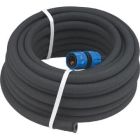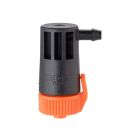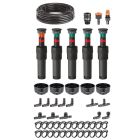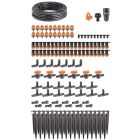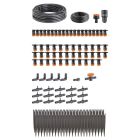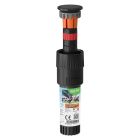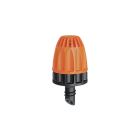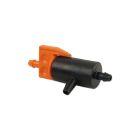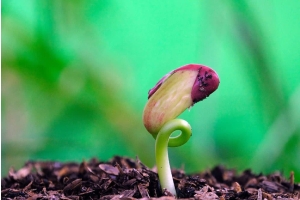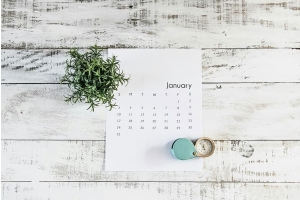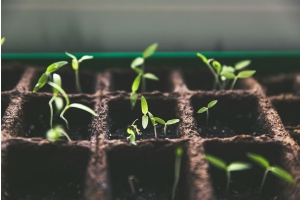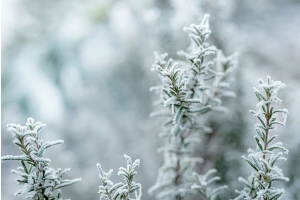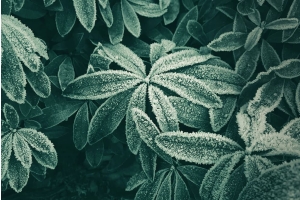How to Set Up the Perfect Irrigation System
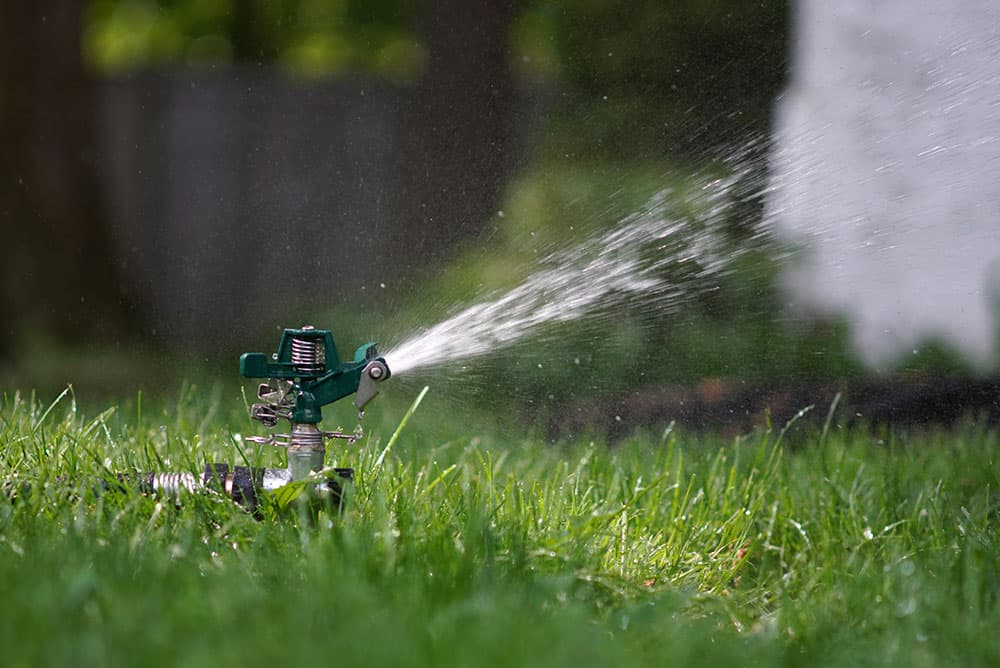
Manually watering individual plants can be labour-intensive and time-consuming. Fortunately, there's a more efficient way to carry out watering tasks: irrigation systems. These systems, commonly associated with large-scale agriculture, can also be a time-saving solution for your lawn or terrace, freeing you from the daily chore of manual watering.
In this article, we'll examine various garden irrigation systems and how to use them to water lawns, raised beds, shrubs, pots, and containers.
Wise Watering: Setting Up a Garden Irrigation System
When installed correctly, an irrigation system can streamline your work, offering a level of convenience that manual watering can't match. No more wrestling with unruly hoses or worrying about missing a plant – with the press of a button, water is distributed to your greenery as and when needed. Keep reading to discover the benefits of garden irrigation and how to get it right.
Why Set Up a Garden Irrigation System?
There are several benefits to garden irrigation, including the following points:
- Reduce Your Workload: Eliminate the daily chore of manual watering, freeing up time for other activities.
- Achieve Uniform Distribution: Ensure consistent and even water distribution, leading to healthier plants and improved yields.
- Enjoy Water Efficiency: Limit water waste and reduce water bill expenses.
- Grow Healthier Plants: Avoid overwatering or underwatering and tailor the schedule to meet the precise needs of different plants.
- Relax with Easy Automation: Set it and forget it – choose an automated system to handle the watering while you tackle other tasks.
Designing Your Garden Irrigation System
As with most projects, careful planning is key to success. Below are some essential areas to consider before getting started.
1. Check your Water Supply
First, identify your water source. Decide whether you will draw water from the mains supply, a water butt or a source such as a well. The source will impact the components needed, such as whether you'll require a water pump or specific tap connectors.
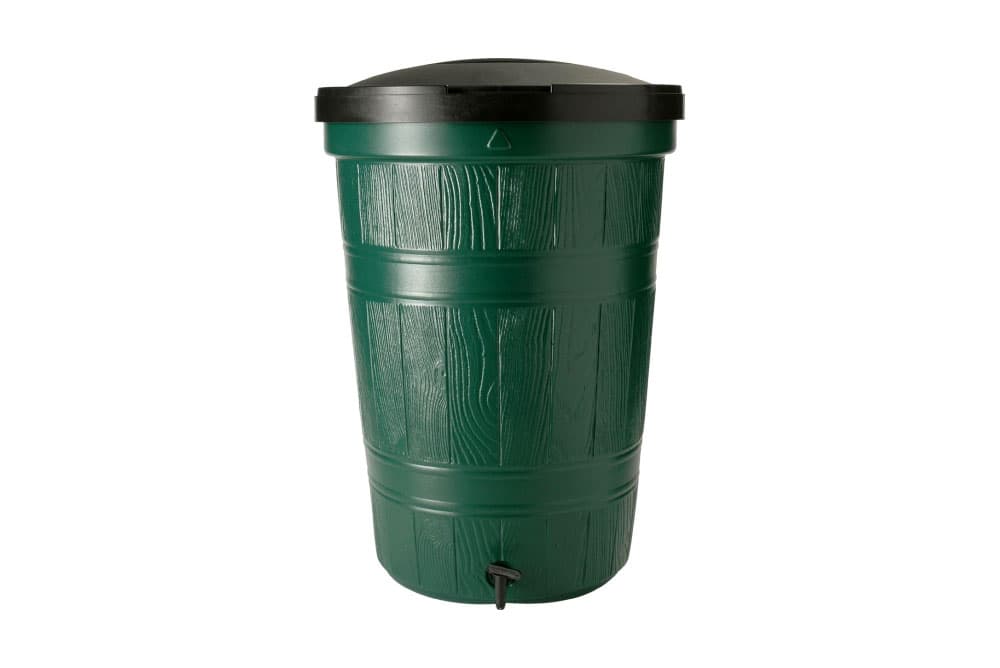
We also recommend using a pressure gauge to test the water pressure from your source. This step ensures that you select appropriate fittings so that your system operates efficiently.
2. Create an Irrigation Layout

Different plants have unique watering needs, so tailor your irrigation system accordingly. Creating a garden diagram is the easiest way to organise your new system. This process could be a simple sketch or a detailed drawing to scale. Grab a pencil, paper and measuring tape, and then mark out the following areas:
- Your house and property line.
- The water source(s).
- Lawns, borders, flower beds, trees and shrubs you wish to water.
- Potential obstacles for your pipework, like gates, walls and ponds.
- The location and amount of pots, containers and hanging baskets.
Use this diagram to plan your irrigation layout, determine which systems will work best, and map out routes to avoid obstacles. Consider dividing your garden into zones and grouping plants with similar watering needs to optimise efficiency.
3. Arrange Automation if Necessary
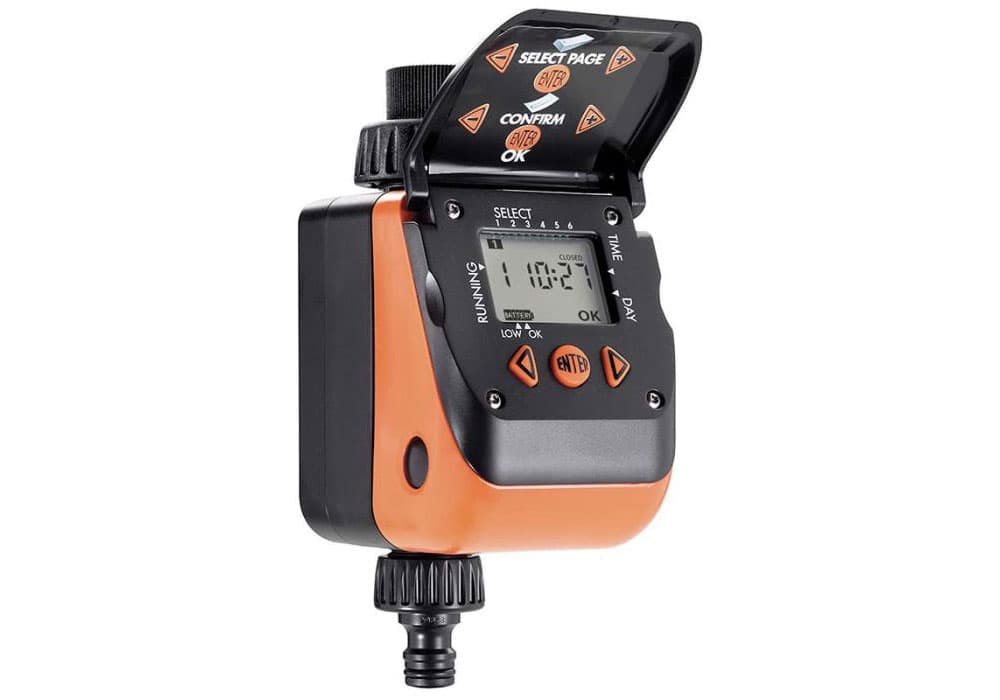
Timers and controllers can further simplify your irrigation. General options have pre-set or straightforward programming, allowing you to customise your watering easily. For more advanced automation, smart controllers provide precise water management with features like remote operation via Bluetooth or Wi-Fi, weather-based scheduling and alerts for issues like broken pipes. You can even incorporate rain and wet leaf sensors to aid efficiency.
Types of Garden Irrigation Systems
Now that you've identified your garden's needs, it's time to choose your irrigation method. The three main options are spray, soak, or drip. Explore each approach and gather the necessary components to install your favourite in your garden.
Sprinkler Systems
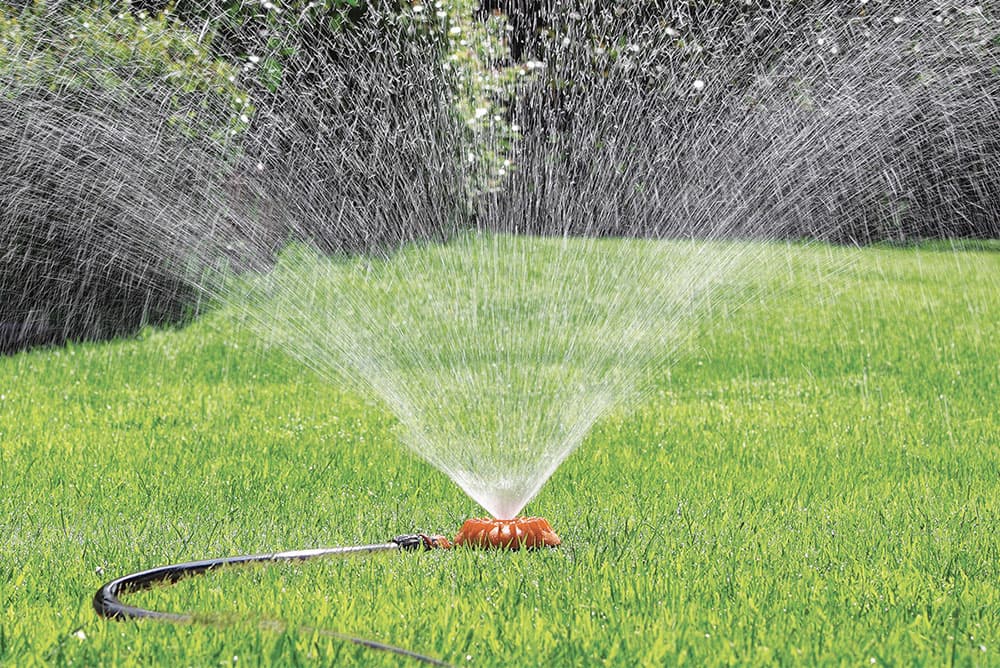
A sprinkler system is a popular irrigation solution that simulates natural rainfall by dispersing a large spritz of water. Sprinklers come in rotating, oscillating, pulsating or pop-up varieties and offer various watering options, ranging from a fine mist to a stronger jet stream.
Overview of Sprinkler Systems
- Benefits: Sprinkler systems can efficiently and evenly cover large areas of land. There are numerous options to customise water delivery, and many rotate to improve reach.
- Drawbacks: Sprinklers can be fairly expensive to install and may waste water if not properly adjusted, especially in windy conditions or when placed on uneven terrain where runoff and evaporation occur.
- Best For: Sprinklers excel in watering lawns or large expanses of land, creating a lush and evergreen appearance even in drier climates.
- Product Highlight: Claber produces a range of useful sprinklers, including the versatile Multifunction Sprinkler. However, if you want to prioritise water conservation, we recommend Hunter's MP Rotator Nozzles, which save 30% more water than traditional sprinklers.
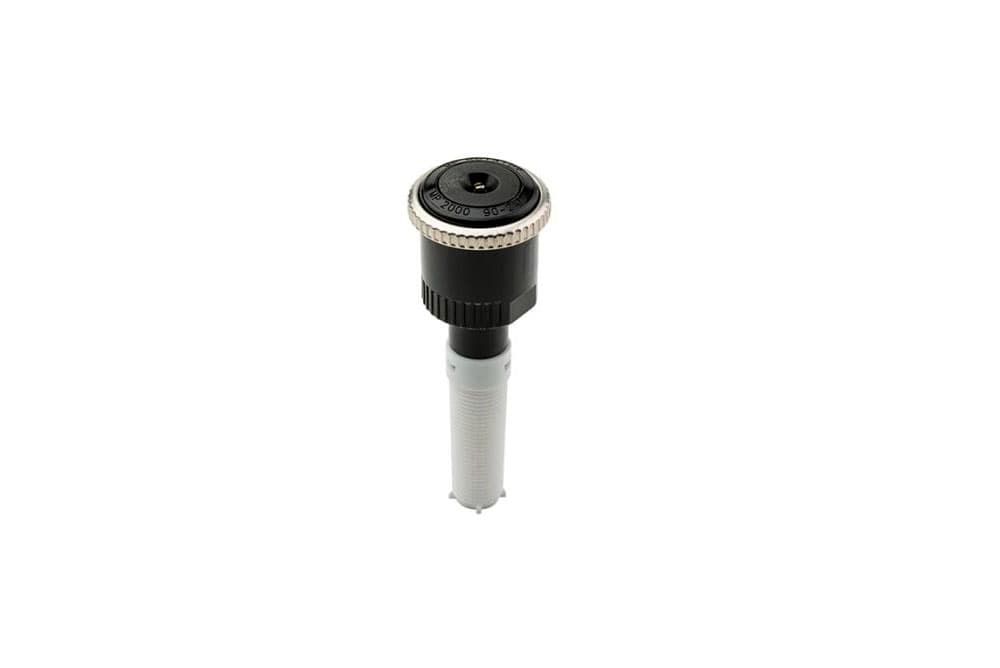
Setting Up a Sprinkler System
Sprinkler systems are installed underground, so in addition to excavation tools, you'll need the following components:
- PVC or flexible Polyethylene pipe and corresponding fittings are used to join lengths and create turns or branches.
- Sprinkler heads with your preferred watering mechanism and spray radius.
- Sprinkler valves to regulate water flow through the system.
- Timers to automate how often and how long the sprinklers operate.
Micro-Sprinkler Systems
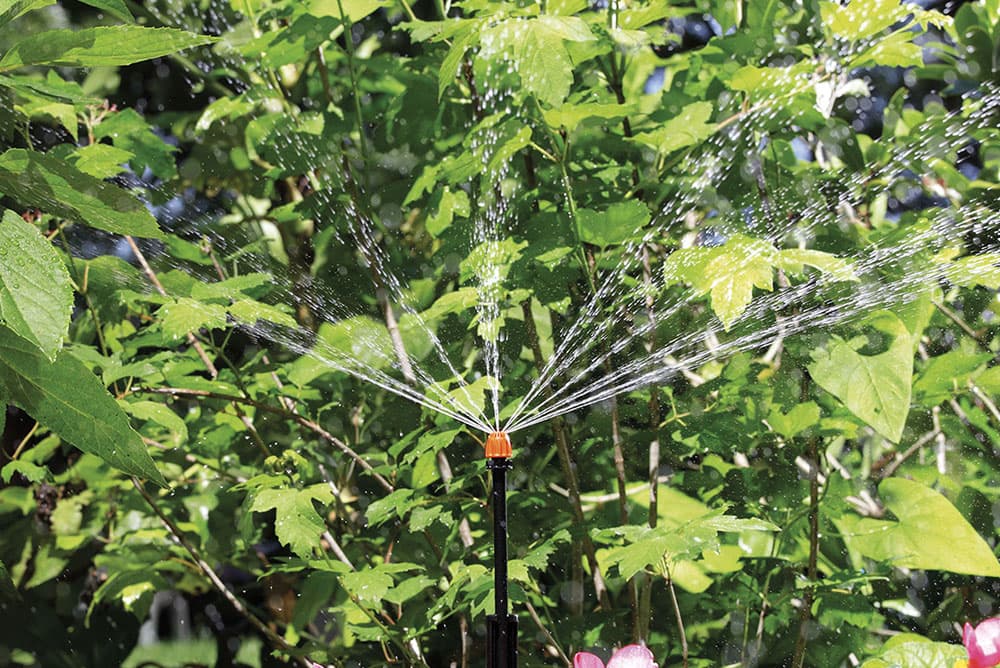
You'll also encounter micro-sprinklers, a type of low-volume irrigation. These mini sprinklers are placed on stakes or risers throughout the garden, providing precise, localised watering above crops.
Overview of Micro-Sprinkler Systems
- Benefits: Micro-sprinklers can cover numerous plants from a single emitter, making them efficient and much less wasteful than manual watering, such as using a garden hose. They are also small and discreet, blending seamlessly into your landscape.
- Drawbacks: These systems may experience higher evaporation losses and runoff during watering.
- Best For: Ideal for small to medium planting areas, micro-sprinklers sit well in flower beds, borders and vegetable patches.
- Product Highlight: The Claber 360° Micro-Sprinkler is excellent for watering circular areas and can be mounted on stakes for added height. For underground irrigation, consider the Colibri 360° Micro-Sprinkler or the Colibri Starter Kit for ease.
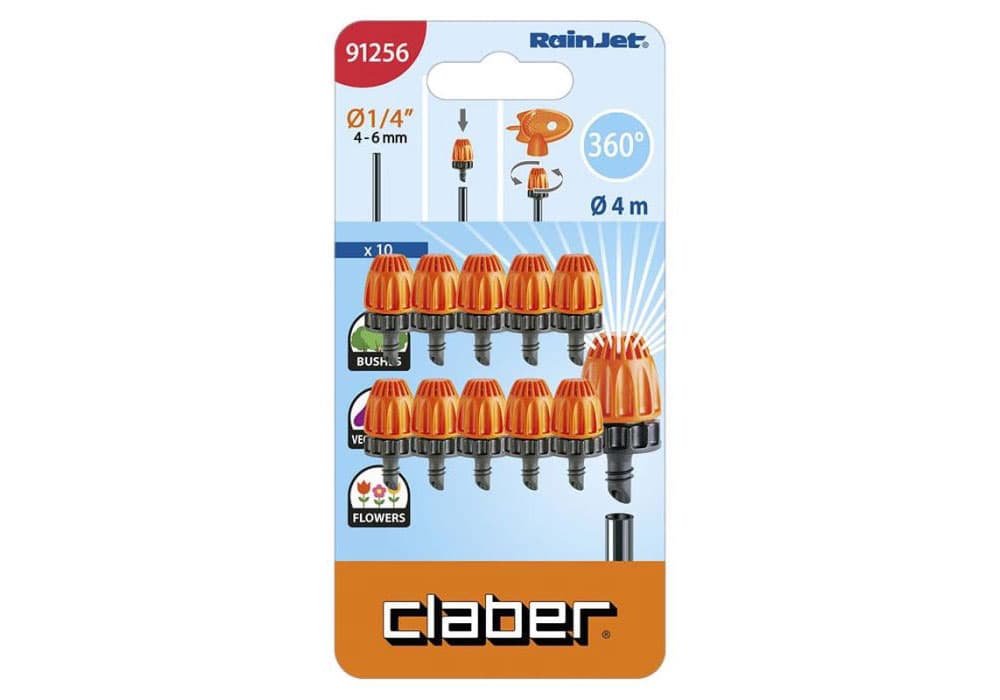
Setting Up a Micro-Sprinkler System
A micro-sprinkler irrigation system typically features:
- A timer that is connected to a tap to automate the watering schedule.
- A network of irrigation supply pipes to carry water around the garden. This includes a main supply pipe and off-shoots of feeding tubes to supply micro-sprinklers with water.
- A selection of spray heads to release water to your planted areas.
- Stakes and raisers that help lift your sprinklers above the lawn, borders or beds.
Soaker Hose Systems
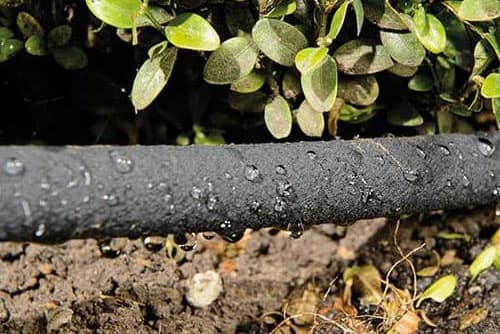
A soaker hose is a specialised porous pipe that releases water slowly through tiny holes along its entire length, deeply soaking the soil. The hose snakes along the ground amongst plants and can sit under bark or mulch to prevent excess water evaporation and UV damage.
Overview of Soaker Hose Systems
- Benefits: Soaker hoses deliver water directly to the soil, minimising water waste and encouraging hardy root systems. The slow and steady release prevents over-watering or excessive dryness, and installation is simple and quick.
- Drawbacks: The ultra-fine holes in the porous pipe surface can clog over time, preventing water seepage and causing uneven distribution. These hoses also suffer on slopes or uneven terrain.
- Best For: Soaker hoses are ideal for small to medium-sized domestic garden environments and are helpful for deep soaking in raised beds, rows of plants, or along shrubs and hedges.
- Product Highlight: Try our exclusive, world-leading porous pipe, which provides trickle irrigation above or below ground. It's produced from recycled tyre remnants and uses less than 50% of water than conventional methods.
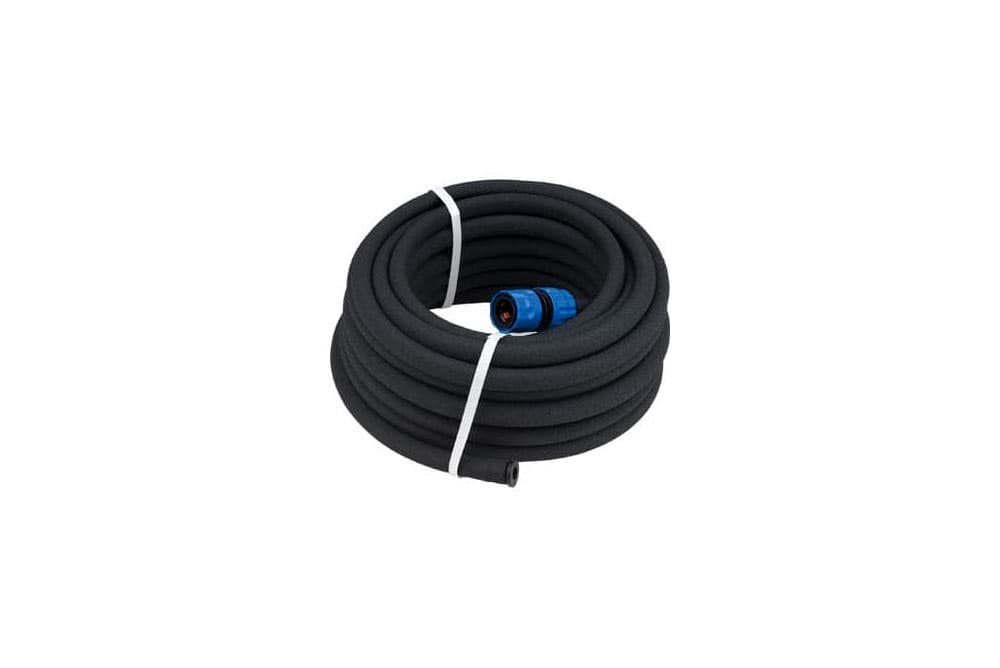
Setting Up a Soaker Hose System
Soaker hose systems typically include the following features:
- A pressure regulator at the tap end. This fixture slows the water down before it reaches the soaker hose, which prevents possible breaks and tears.
- A water filter to prevent the hose’s tiny pores from clogging up with sediment.
- A garden hose pipe and adaptors. Adaptors connect the hose to the porous pipe, and then you can use porous pipe fittings to customise your layout.
- An end cap that attaches to the open end of the hose.
Drip Line Systems
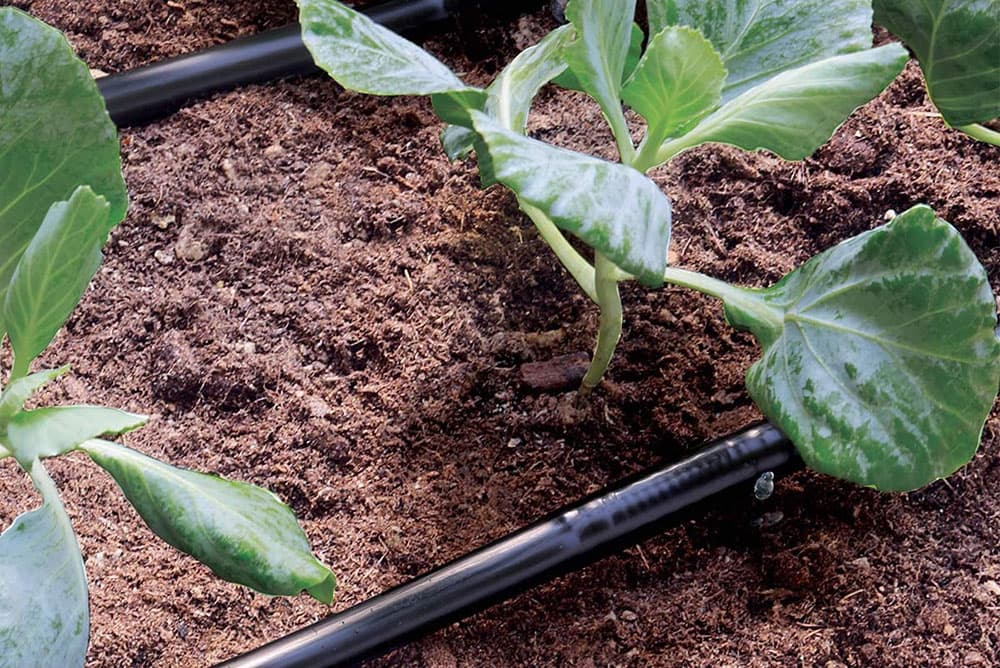
A drip irrigation system uses tubing and emitters to deliver tiny drops of water directly to the base of each plant, offering a water-efficient alternative to other more water-intensive irrigation methods.
Overview of Drip Line Systems
- Benefits: Drip lines supply water directly to the roots, promoting healthier growth, reducing water waste, and minimising runoff. They work well on slopes or uneven terrain and have a low profile that blends into your garden foliage.
- Drawbacks: The initial setup can be complex, with many small parts to manage. Additionally, as the plants grow, you may have to adjust the drip line and perform regular maintenance to prevent clogging.
- Best For: Drip lines are ideal for watering individual plants in containers and hanging baskets, as well as rows of crops, flower beds, and extended planting areas like hedgerows.
- Product Highlight: Either the Claber Orto or Terrazzo Drip Kit is excellent for stress-free installation. These ready-to-use kits include all the components needed to deliver water to up to 50-60 plants with ease.
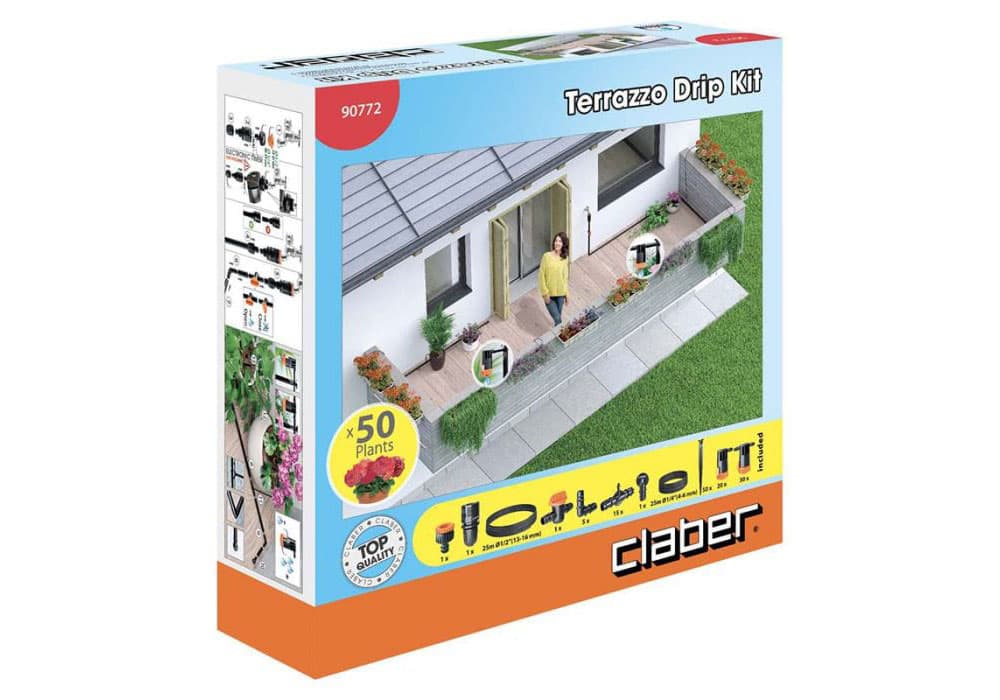
Setting Up a Drip Line System:
If you'd prefer to buy your components separately, you'll generally need the following items:
- A backflow preventer, pressure regulator, filter and adaptor.
- A main irrigation supply pipe – usually an LDPE pipe or structured drip line tape that will enlarge when it's filled with water.
- Micro tee connectors and feeding tubes create off-shoots from the main pipe and supply the drippers with water.
- A selection of inline and end-of-line drippers to form chains of emitters.
- Ground support stakes to anchor pipes.
- You may need a pipe hole puncher to install adapters or drip emitters.
Watch Your Garden Flourish with LBS Horticulture
That concludes our guide on garden irrigation and how to set up your ideal system. If you have any further questions, please contact us.
Our team offers expert advice on boosting growth, including how to incorporate fertilisers into your irrigation. Alternatively, visit our blog for more handy insights, garden inspiration, and tips on transforming your outdoor space.



